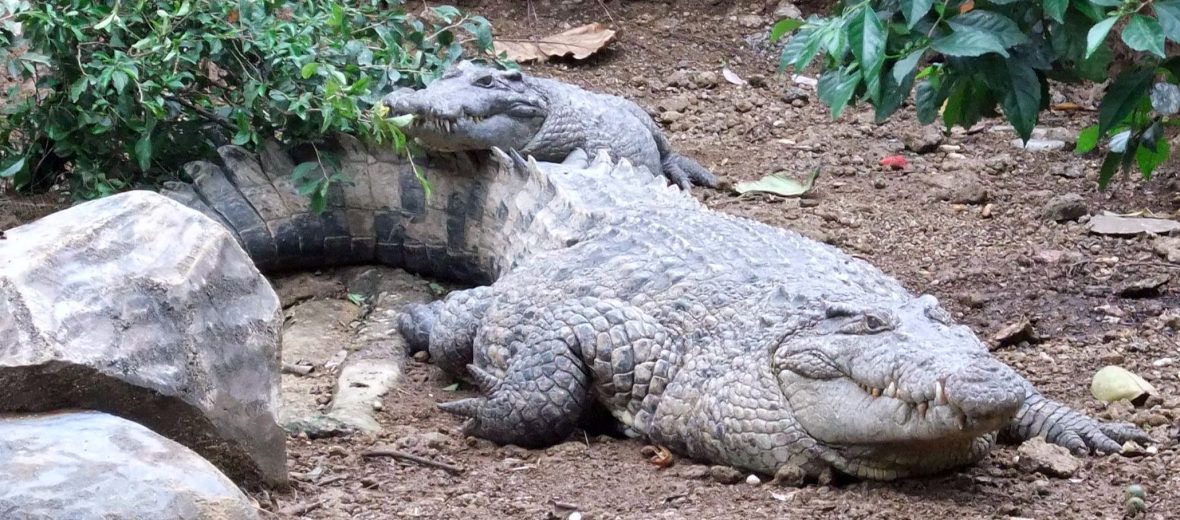
The New Guinea crocodile can be found on the island of New Guinea. They prefer freshwater marshes, swamps, and lakes; with an occasional appearance in brackish water habitats. These crocs face the threats of habitat destruction at the hands of mining and quarrying, and invasive species (and with them disease and competition for food). However, their estimated population of 100,000 remains stable and they are thus listed as Least Concern by the IUCN.
First the Stats…
Scientific name: Crocodylus novaeguineae
Weight: Up to 440 lbs.
Length: Up to 11 feet
Lifespan: Up to 60 years
Now on to the Facts!
1.) These crocodiles were hunted extensively for their meat and skins in the 20th century. Due to conservation efforts, they have bounced back.
2.) They are mostly nocturnal (active at night).
3.) During the daylight hours, they will spend most of their time just under the surface of the water, with just their nostrils exposed, for breathing. Their eyes are also risen just above the waterline.
4.) While resting, during the day, they will huddle into groups. However, at night they will separate to hunt on their own.
5.) A group of crocodiles is called a congregation, float, bask, or nest.
But wait, there’s more on the New Guinea crocodile!
6.) When obtaining prey, these crocs will flick their head sideways and grip their prey item with their sharp teeth.
7.) Being quite spry, these smaller sized crocs are capable of breaching the water and leaping up to grab passing bats and birds from the air.
Did you know…?
The parents can carry up to 15 hatchlings in their mouth at 1 time. Instinct kicks in and prevents the adults from closing their mouth and crushing the hatchlings.
8.) They prey on bats, birds, crabs, fish, frogs, shrimp, snakes, and various small to medium-sized mammals.
9.) New Guinea crocodiles communicate via roars, growls, threatening postures, and finally attacks.
10.) Females are gravid (pregnant) for up to 91 days, at which time she will lay her nearly 48 eggs. These hatch in up to 80 days.
But wait, there’s still more on the New Guinea crocodile!
11.) While still in their eggs, juvenile crocs will emit grunts and yelps. It is thought that this aids in synchronized hatching, as when they yelp, this signals the female to gently pick up the egg(s) and help to open them with her sharp teeth, allowing the hatchling croc to escape the egg easier.
12.) Once hatched, the hatchlings are carried via mouth, by the mother and father, to the water’s edge.
13.) These crocodiles become sexually mature at different times. Males are mature at 8.2 feet long, while females are mature at approximately 6.7 feet.
Now a Short New Guinea Crocodile Video!
This video talks about crocodiles in general.
Be sure to share & comment below! Also, check out the Critter Science YouTube channel. Videos added regularly!
Want to suggest a critter for me to write about? Let me know here.
Photo credit: Midori



